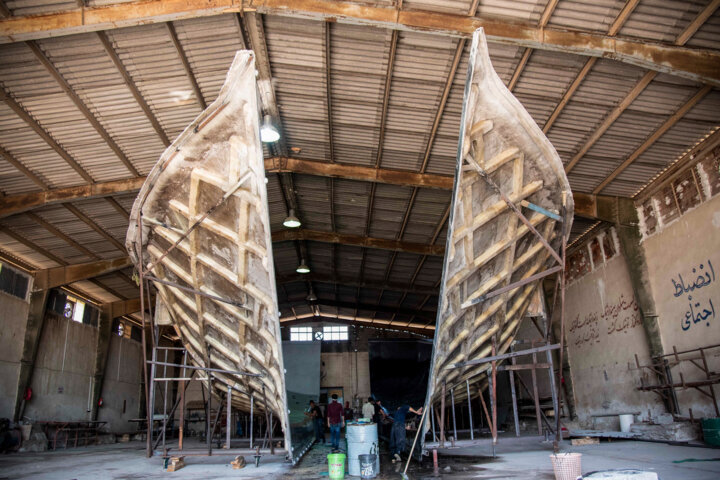Lenj boats: guardians of maritime heritage in Persian Gulf

Tehran – Construction of Lenj boats is an ancient indigenous craft along the northern coasts of the Persian Gulf that has historically played an important role in navigation, trade, and the livelihoods of southern Iran's people.
Skills pertaining to the construction of Lenj boats and sailing them were added to UNESCO’s World Heritage List as Iran’s intangible cultural heritage in 2011.
Added to UNESCO’s list of intangible cultural heritage, this industry now faces numerous threats and requires concerted efforts for its preservation and revival, IRNA reported.
Wooden Lenj boats which are made by skilled locals, have sailed in Persian Gulf waters for centuries. They are considered a symbol of Iran’s cultural identity and global heritage.
However, this ancient art faces challenges like replacement with fiberglass boats, high manufacturing costs, low demand, and negligence of traditional skills.
However, over the past couple of years, there have been critical voices warning about an imminent threat to that time-honored know-how, which is tied to many cultural values.
Moreover, there are growing concerns that this element is at risk of being removed from UNESCO's list of intangible cultural heritage.
Generally speaking, the UN recognition distinguishes the importance of the preservation and protection of the Lenj construction boat as the unique maritime heritage of southern Iranian coasts.
The Iranian Lenj boats are traditionally hand-built and used by the people of the north coast of the Persian Gulf for sea voyages, trade, fishing, and pearling. As mentioned by the UN cultural body, the traditional knowledge surrounding Lenj vessels includes oral literature,
performing arts, and festivals, in addition to sailing and navigation techniques as well as terminology and weather forecasting associated with sailing, and the skill of boating.
The maritime knowledge used for sailing in Lenjs is traditionally passed down from father to son. Iranian navigators can locate ships based on the positions of the sun, the moon, and stars; they used special formulas to calculate latitude and longitude, as well as water depth.
As for the impending threats, several factors contribute to the potential loss of UNESCO status for that skill passed down from generation to generation.
Firstly, a rapid pace of modernization and urbanization in Iran, especially in the coastal areas, has led to a decline in the practice and spread of traditional skills related to Lenj building and sailing.
Moreover, the younger generations are increasingly losing interest in acquiring these skills, opting for more modern forms of employment.
Secondly, as the world becomes more interconnected, traditional practices and cultural heritage are gradually being eroded when young people are exposed to a globalized culture, which causes changes in values, lifestyles, and preferences.
KD
Leave a Comment